Two identical unifrom rods OA and OB each of length l and mass m are connected to each other by a massless pin connection (both the rods can rotate about O which is free to move), that allows free rotation. The assembly is kept on a frictionless horizontal plane. Now two point masses each of mass m moving with speed u perpendicular to the AB and hit the assembly inelastically at points A and B as shown in the figure.
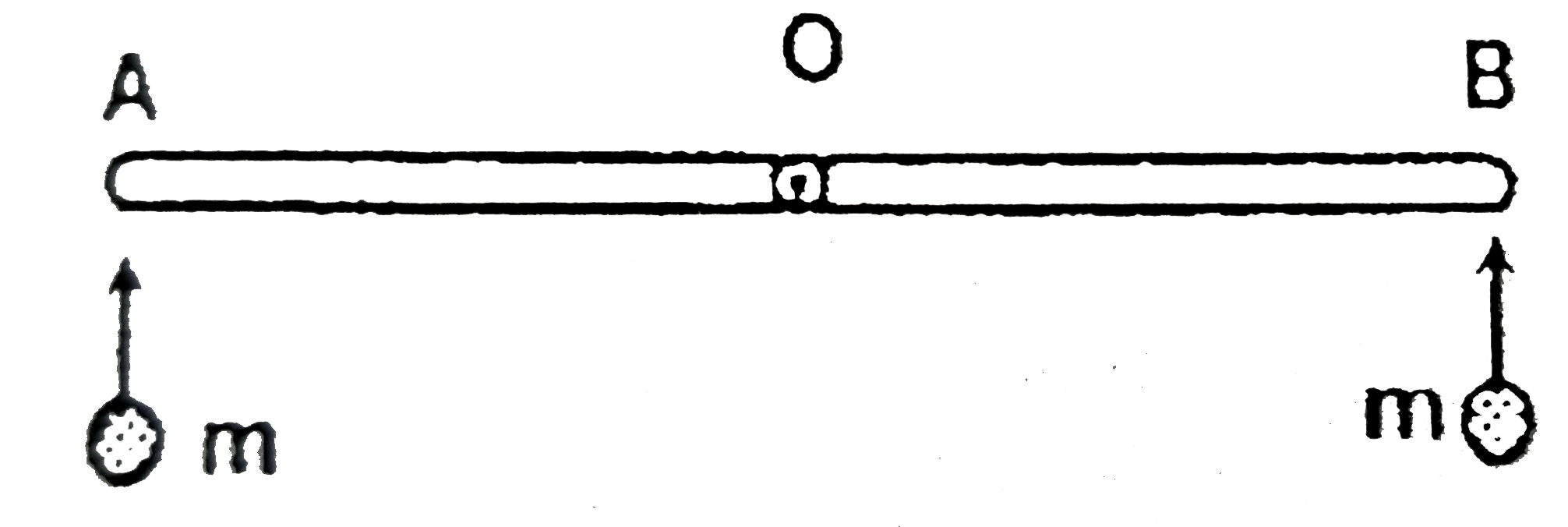
Find the angular speed of rods just after the collision
34ul
65ul
32ul
zero
Step by step video & image solution for Two identical unifrom rods OA and OB each of length l and mass m are connected to each other by a massless pin connection (both the rods can rotate about O which is free to move), that allows free rotation. The assembly is kept on a frictionless horizontal plane. Now two point masses each of mass m moving with speed u perpendicular to the AB and hit the assembly inelastically at points A and B as shown in the figure. Find the angular speed of rods just after the collision by Physics experts to help you in doubts & scoring excellent marks in Class 11 exams.
Updated on:21/07/2023Topper's Solved these Questions
Similar Questions
Two identical unifrom rods OA and OB each of length l and mass m are connected to each other by a massless pin connection (both the rods can rotate about O which is free to move), that allows free rotation. The assembly is kept on a frictionless horizontal plane. Now two point masses each of mass m moving with speed u perpendicular to the AB and hit the assembly inelastically at points A and B as shown in the figure.

The speed of the centre of mass of the whole assembly just after the collision will be
View SolutionTwo identical unifrom rods OA and OB each of length l and mass m are connected to each other by a massless pin connection (both the rods can rotate about O which is free to move), that allows free rotation. The assembly is kept on a frictionless horizontal plane. Now two point masses each of mass m moving with speed u perpendicular to the AB and hit the assembly inelastically at points A and B as shown in the figure.
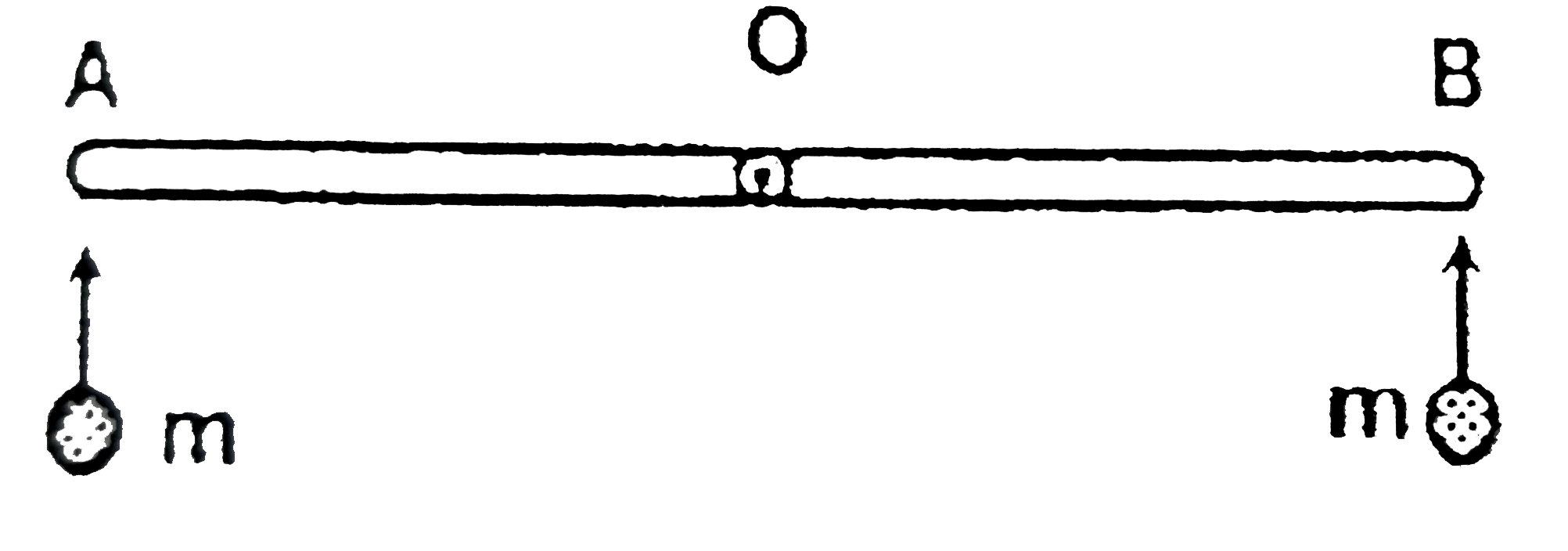
Find the speed of centre of rod AO just after the collision.
View Solution
Knowledge Check
Two small balls A and B, each of mass m, are joined rigidly at the ends of a light rod of length L. They are placed on a frictionless horizontal surface. Another ball of mass 2 m moving with speed u towards one of the ball and perpendicular to the length of the rod on the horizontal frictionless surface as shown in the figure. If the coefficient of restitution is 1/2 then the angular speed of the rod after the collision will be
 A43ulBulC23ulDnone of these
A43ulBulC23ulDnone of theseA ball of mass m moving with a speed u0 collides elastically with a rod of mass M suspended in the vertical plane by the hinge O. The rod is free to rotate in the vertical plane. Before and after the collision.
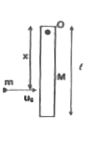 ALinear momentum of the ball and rod system is conservedBLinear momentum of the ball and rod system is conserved only when the collision is elasticCLinear momentum of the ball and rod system may be conserved for a particular value of x.Dnone of these
ALinear momentum of the ball and rod system is conservedBLinear momentum of the ball and rod system is conserved only when the collision is elasticCLinear momentum of the ball and rod system may be conserved for a particular value of x.Dnone of these
A uniform rod of mass m and length l can rotate freely on a smooth horizontal plane about a vertical axis hinged at point H. A point mass having same mass m coming with an initial speed u perpendicular to the rod, strikes the rod in-elastically at its free end. Find out the angular velocity of the rod just after collision?
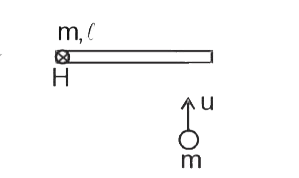
View SolutionTwo identical rods each of mass m and length are connected as shown. Locate c.m.
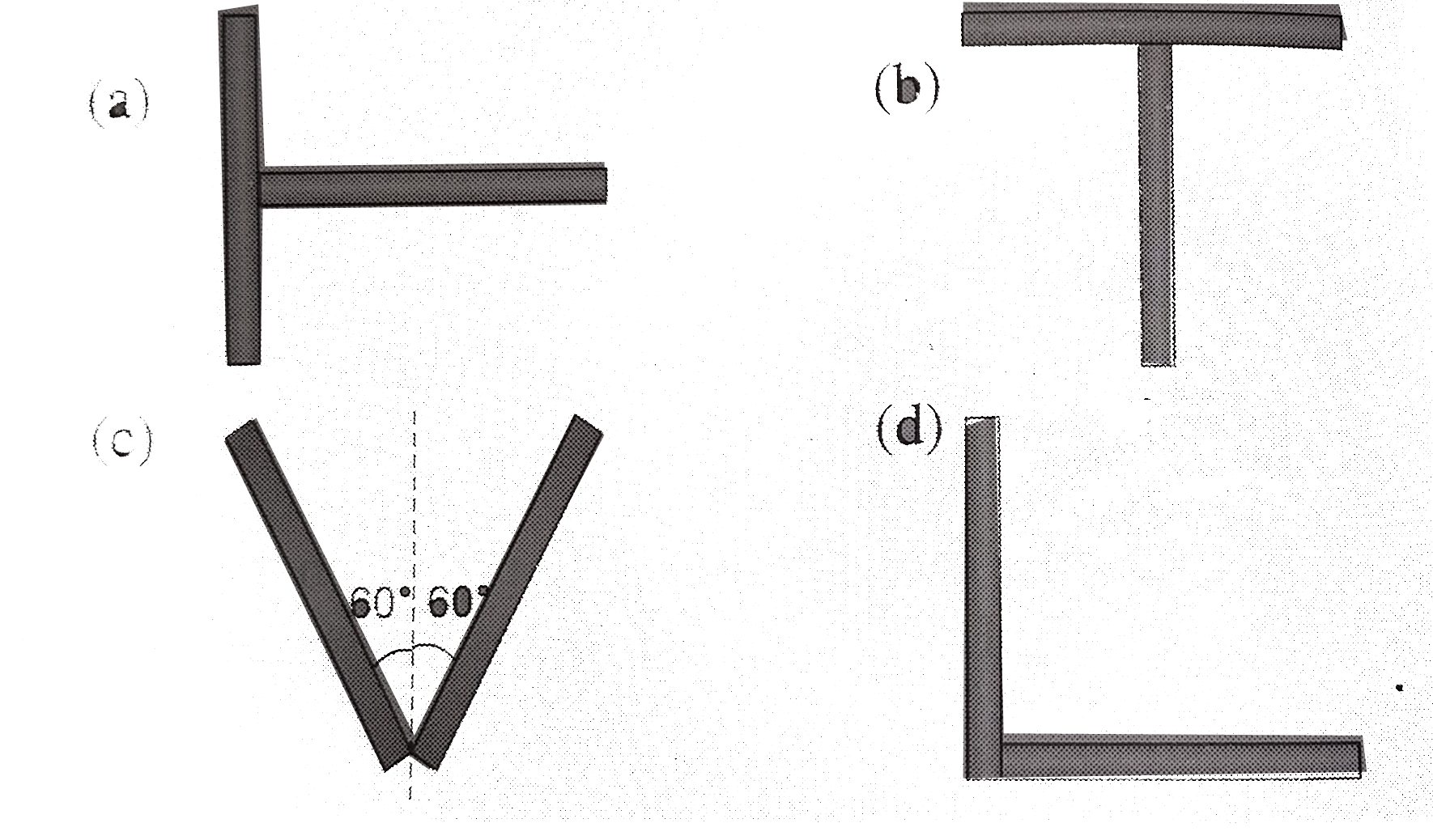
View SolutionA rod of mass M and length L is kept on a frictionless horizontal floor. A particle of mass m moving perpendicular to the rod with a speed v strikes at the end of the rod and sticks there. Calculate angular velocity acquired by the combined system.
View SolutionA uniform rod of mass M and length L lies on a frictionless horizontal plane. A particle of same mass M moving with speed v0 perpendicular to the length of the rod strikes the end of the rod and sticks to it. Find the velocity of the center of mass and the angular velocity about the center of mass of (rod + particle) system.
View SolutionTwo uniform thin rods each of length L and mass m are joined as shown in the figure. Find the distance of centre of mass the system from point O

View SolutionA L shaped rod of mass M is free to rotate in a vertical plane about axis A A as shown in figure. Maximum angular acceleration of rod is
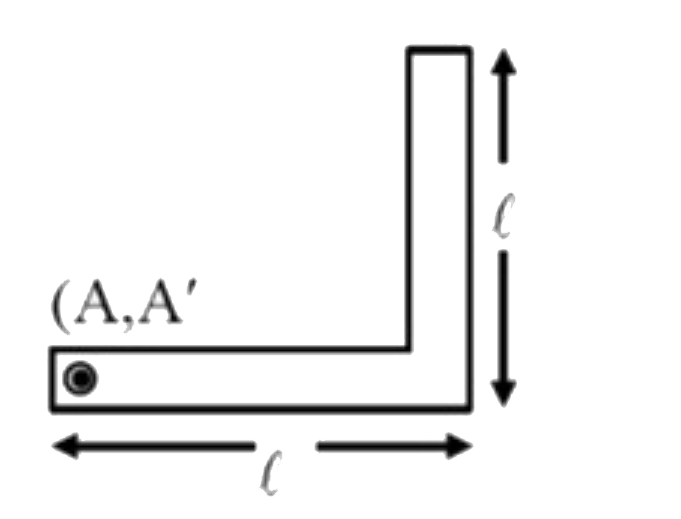
View Solution
